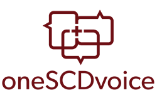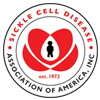Trusted Resources: Evidence & Education
Scientific literature and patient education texts
Learning About Sickle Cell Disease
source: The National Human Genome Research Institute
year: 2020
summary/abstract:Sickle cell disease is the most common inherited blood disorder in the United States. Approximately 100,000 Americans have the disease.
In the United States, sickle cell disease is most prevalent among African Americans. About one in 12 African Americans and about one in 100 Hispanic Americans carry the sickle cell trait, which means they are carriers of the disease.
Sickle cell disease is caused by a mutation in the hemoglobin-Beta gene found on chromosome 11. Hemoglobin transports oxygen from the lungs to other parts of the body. Red blood cells with normal hemoglobin (hemoglobin-A) are smooth and round and glide through blood vessels.
In people with sickle cell disease, abnormal hemoglobin molecules – hemoglobin S – stick to one another and form long, rod-like structures. These structures cause red blood cells to become stiff, assuming a sickle shape. Their shape causes these red blood cells to pile up, causing blockages and damaging vital organs and tissue.
read moreRelated Content
-
Imara’s IMR-687 for SCD Receives FDA Rare Pediatric Disease DesignationThe U.S. Food and Drug Administration (F...
-
Miai & Ama Talk About Sickle Cell Diseasehttps://www.youtube.com/watch?v=7bUFGux-...
-
Phase 3 study of L-Glutamine in sickle cell disease: Analyses of time to first and second crisis and average cumulat...A Phase 3, double-blind, randomized, pla...
-
Conditions screened by stateWhile all states require newborn screeni...
-
The Life, Death, and Dream of a Research Diversity Crusader“We want to have a nation in which the...
-
Hydroxyurea improves lung function in children with sickle cell diseaseFor the first time, researchers were abl...
-
Sickle cell gene linked to elevated risk of developing kidney failureNew research indicates that being born w...
To improve your experience on this site, we use cookies. This includes cookies essential for the basic functioning of our website, cookies for analytics purposes, and cookies enabling us to personalize site content. By clicking on 'Accept' or any content on this site, you agree that cookies can be placed. You may adjust your browser's cookie settings to suit your preferences. More Information
The cookie settings on this website are set to "allow cookies" to give you the best browsing experience possible. If you continue to use this website without changing your cookie settings or you click "Accept" below then you are consenting to this.




 +myBinder
+myBinder
